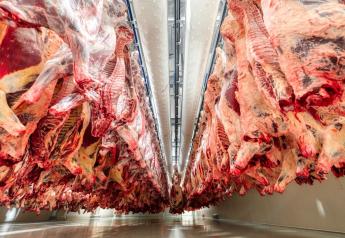Auburn's One Health Program Integrates Multiple Disciplines

Health-related interactions among people, animals and the environment have a profound influence on disease risk, transmission and prediction efforts.
One Health, a graduate certification program offered by the Auburn University School of Forestry and Wildlife Sciences, presents a new integration of human, veterinary and environmental sciences. The program is a partnership of the School of Forestry and Wildlife Sciences, the Auburn University colleges of Veterinary Medicine and Agriculture and the University of Alabama at Birmingham's School of Public Health.
Experts in diverse fields have studied human-animal-environmental interactions for decades. But awareness of those linkages is now critical in the face of increasingly volatile factors such as climate change, population growth, land use and changes in disease vector ecology, said Graeme Lockaby, associate dean for research in Auburn's School of Forestry and Wildlife Sciences.
"Our One Health Graduate Certificate provides students with an understanding of the nexus among human, environmental and animal health which forms the basis of planetary health," Lockaby said. "Presently, health issues are very complex and often involve interactions among life cycles of pathogens and arbovirus vectors, human risk factors and environmental drivers."
The One Health initiative impacts society on multiple levels, including veterinary medicine, water and natural resource management, community planning, public health and education and agricultural practices. The professional certification program requires 15 credit hours of online coursework in which students examine public health threats, including infectious diseases, and assess strategies for creating sustainable local and global ecosystems. These credits can also be applied to the pursuit of a master's degree.
Auburn Assistant Professor of Disease Ecology Sarah Zohdy said students seeking One Health certification will take on issues that are not just complex, but also extraordinarily time-sensitive.
"The human population is rapidly growing and our reliance on natural resources is stronger than ever, although the resources themselves are finite," Zohdy said. "The most prevalent health problems humans face in modern times are heavily linked to environmental conditions and ecosystem health."
She said the One Health concept is groundbreaking in its proactive approach.
"In recent decades, the approach to mitigate diseases has been reactive, treating symptoms of disease rather than addressing the causes," she said. "By integrating a One Health approach we can proactively address human, animal and environmental health issues."
Janaki Alavalapati, dean of Auburn's School of Forestry and Wildlife Sciences, said the certification program is essential to provide professionals with the tools they need to take on environmental health threats.
"The Auburn University One Health online graduate program clearly represents an area of crucial need and importance within our state as well as nationally and globally," Alavalapati said.
An estimated 60 percent of human infectious diseases and 70 percent of emerging human diseases have their source in domestic or wild animals. These zoonotic diseases include rabies, West Nile virus, Rift Valley fever and brucellosis, among others.
Often, animal health can serve as a warning for human disease transmission, Lockaby said. For example, agents that determine risk of West Nile virus include environmental factors that favor reproduction of the Culex mosquito species, and bird habitats that serve as reservoirs of the disease.
Those determinants, combined with socioeconomic factors that render some people especially vulnerable to the disease, call for an urgent, wide-scale endeavor.
"It is crucial that people engaged in many types of activities—such as health specialists, city managers, stormwater managers and urban planners—understand the complexity and degree to which causal factors may be interrelated and act accordingly," Lockaby said.
Kelly M. Stevens, director of Infectious Disease and Outbreaks in the Bureau of Communicable Disease at the Alabama Department of Public Health, or ADPH, said the issues One Health is taking on are highly prioritized because of the great number of infectious diseases in humans that are spread by animals.
"The ADPH recognizes that the health of our citizenry is connected to the health of animals and our environment," Stevens said. "ADPH strives to improve the health of our community though collaborative and multidisciplinary efforts to monitor and control public health threats."
Lockaby said the program is likely to expand as environmental threats grow.
"The need for training from the One Health perspective will become even more acute in the future, as climates shift and diseases emerge in new locations," Lockaby said. "Our goal is to provide a starting point for the One Health conversation that must continue indefinitely."
More information about the One Health certificate program is available by contacting School of Forestry and Wildlife Sciences Graduate Program Coordinator Rebecca Masic at 334-844-8027 or rbm0010@auburn.edu.







